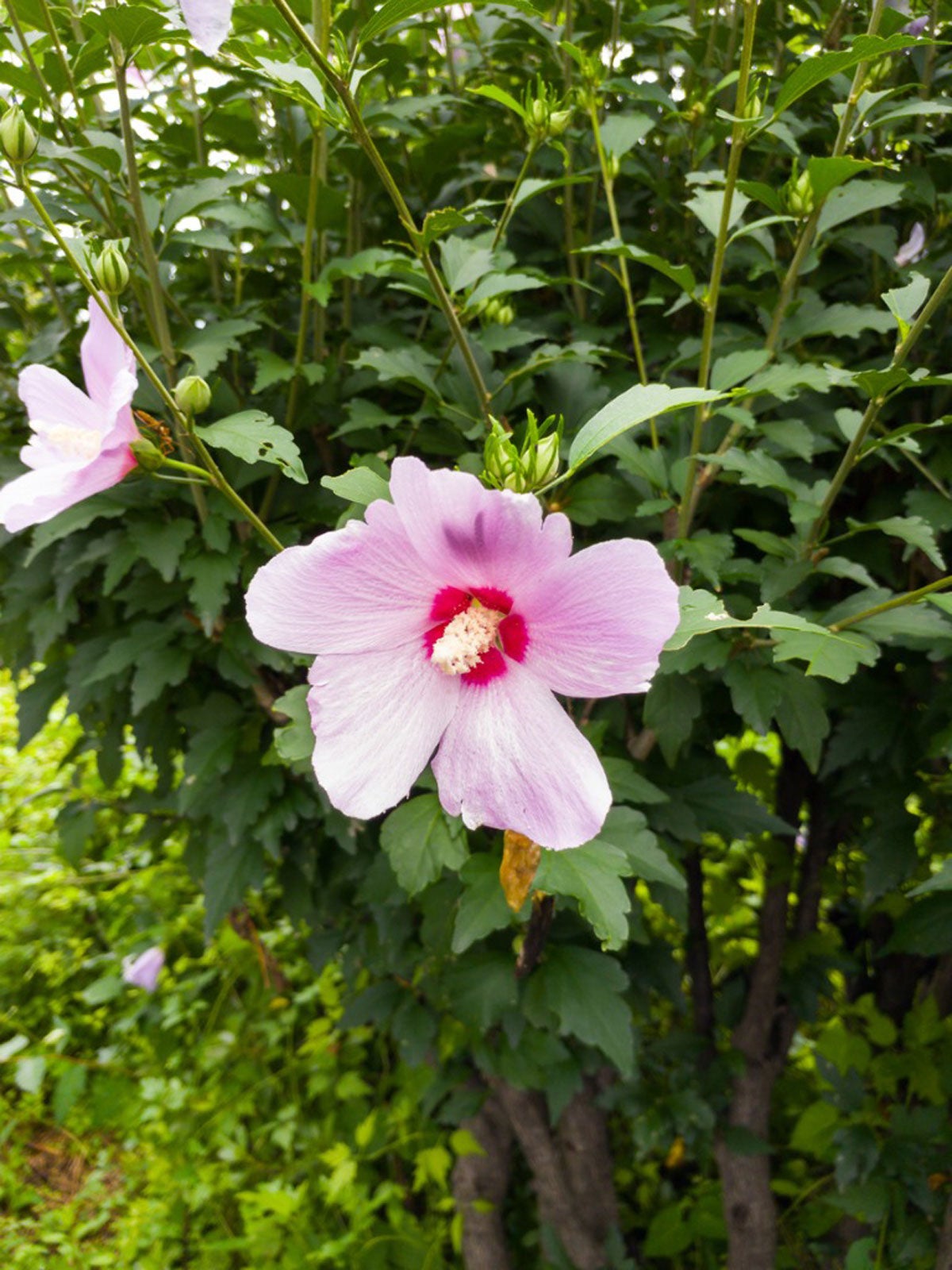
Remove spent blossoms after flowering to prevent them from re-seeding in areas where it is a problem.īirds & Wildlife : Blossoms are frequented by bees, butterflies and other pollinators. To prevent leggy-ness and encourage compact growth, cut back stems back to 2 to 3 buds in late winter to early spring. In Zones 5 and less, pile 6 inches of a winter mulch over the crown (where stem and roots meet). Winterkill:Īvoid fertilizing after July as new growth is susceptible to frost damage. rose of sharon - rose of sharon stock pictures, royalty-free photos & images. However, since the babies will not be identical to the parent plant, you might get some beauties – if you want to grow them on. Miss Mamelodi Sundowns 2016/2017, Sharon-Rose Khumalo during the Miss SA 2018 beauty pageant grand finale at the Time Square Sun Arena on May 27. If conditions are satisfactory their seeds will form colonies around the mother plant. On the other hand, yellow foliage often indicates overwatering. Although they like the heat of summer they do not like dry soil and will abort their flower buds if the soil is too dry.
Rose of sharon full#
Rose of Sharon perform best in full sun in humus rich moist soil surrounded by 3 inches of an organic mulch. A colourful contrasting ‘eye’ often surrounds the base of the pistil. While the term rose of Sharon has been used for many plants, including in biblical references, the plant most often associated with it today is the.

A protruding stamen laden pistil is surrounded by 5 petals for single varieties and many more for double varieties. Rose of Sharon, Hibiscus syriacus, is a late flowering, hardy hibiscus, which brings life and colour to the garden when other plants are past their best. Many cultivars are available with colours ranging from reds, blues, purples and whites. Their hollyhock-like flowers last for just a day, however, they blossom for a few months in late summer to frost. This showy shrub is a hardy relative of the more exotic and tropical hibiscus, Hibiscus rosa-sinensis (USDA Zones 9 to 11). Rose of Sharon are the hibiscus of the north. Problems: self-seeds, no serious problems, slight susceptibility of Japanese beetles, whiteflies, aphids, rusts, blights. Pruning : late winter before new growth emerges. Propagation : semi-hardwood cuttings just prior to flowering, seeds (seedlings may not resemble parent plant). Uses : mix borders, hedgerow, naturalize, birds, butterflies, foundation, containers. Soil : soil tolerant but prefers moist well-drained soil. Pinks, reds, purples and white, often with a colourful eye in the centre.įruit : seed pods with small black viable seeds in October. Mature Size : 8 to 12 feet x 6 to 10 feetįoliage : palmate veined with 3 lobes and coarsely serrated margins up to 4 inches long.įlowers : June to October, circular flared 5 petalled blossoms up to 3 inches wide, single prominent pistil column with many stamens.

Lily-of-the-Valley Shrub, Pieris japonica


 0 kommentar(er)
0 kommentar(er)
